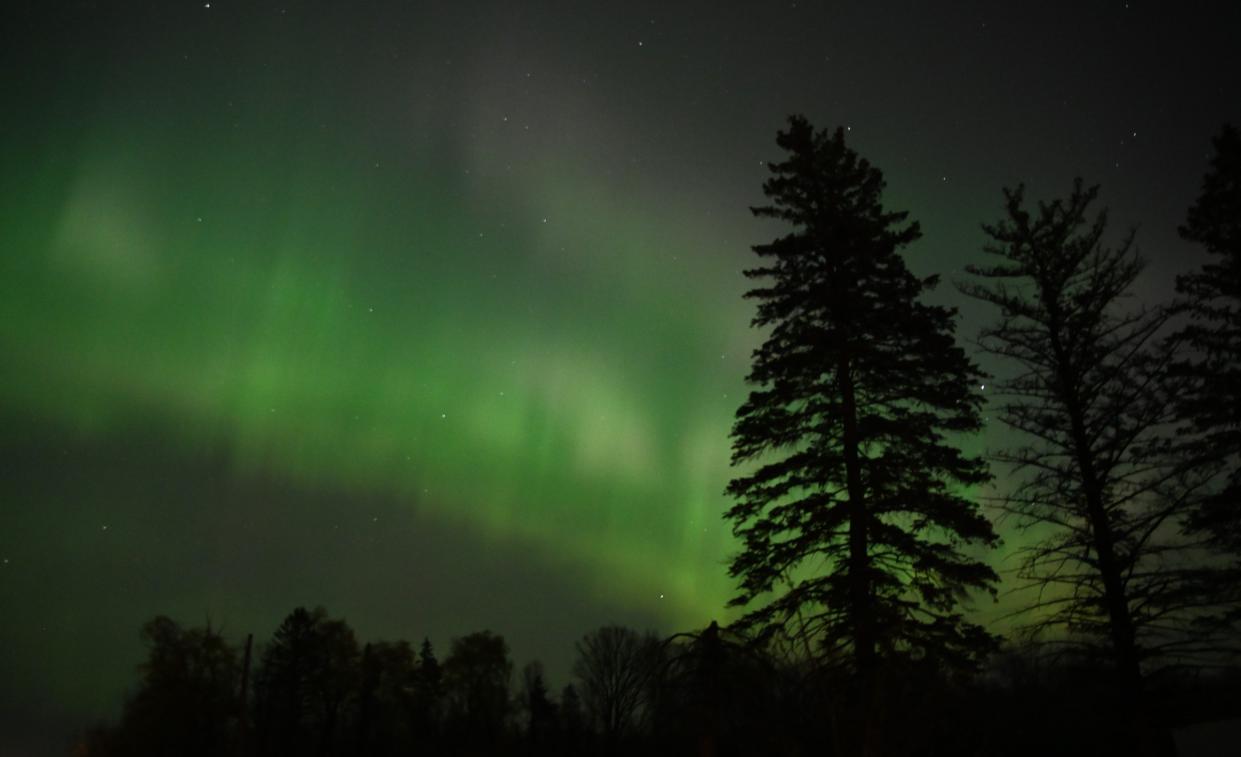Northern lights update: Latest forecast reduces Wyoming's chance of viewing the aurora borealis

The latest forecast has reduced Wyoming's odds of getting to view the northern lights this week, but there's still a chance some Wyomingites could catch a glimpse of the aurora borealis in the sky.
Wyoming was originally one of 17 states predicted to possibly see the northern lights but some of those factors have changed, meteorologists said Tuesday.
This is not the first time this year that the natural phenomenon will be visible. In late April, a geomagnetic storm created lights that were shown over 30 U.S. states. The lights were visible in Iowa, North Dakota, Kansas and more.
While Wyoming is not currently listed as a place that has a chance of seeing the lights, the forecast could still change before Thursday. If viewing the northern lights is on your bucket list, you'll want to be ready. Here's everything you need to know to possibly spot them.
Northern lights 2023: 17 US states could see northern lights this week. Here's where you might view them.
Where could the northern lights appear in Wyoming?
A previous forecast from the University of Alaska Fairbanks Geophysical Institute stated the northern lights could be visible low on the horizon in Cheyenne. The current forecast no longer lists Wyoming as a potential location.
What time will the northern lights be visible?
The best viewing time is between 10 p.m. and 2 a.m. local time, the National Oceanic and Atmospheric Administration's (NOAA) Space Weather Prediction Center says. Clear skies are necessary for people hoping to get a look, meaning those interested should try to distance themselves from city light pollution.
As the day approaches, NOAA will monitor the geomagnetic activity and release a forecast of its own.
Where else can the Northern Lights be seen?
Other states that might get their own chance to see the lights include:
Alaska
Montana
South Dakota
Wisconsin
Michigan
Oregon
NASA recycles astronaut pee, sweat: “The crew is not drinking urine": NASA system helps astronaut pee, sweat to be recycled
When was the last major northern light event in the U.S.?
A geomagnetic storm, defined by the NOAA as a major disturbance of Earth's magnetosphere, occurred in April and made light visible in 30 states. The aurora could be seen in parts of Iowa, North Dakota and Kansas.
What are the northern lights?
The northern lights, according to the University of Alaska Fairbanks Geophysical Institute, are a luminous glow seen around the magnetic poles of the northern and southern hemispheres. Known for creating ribbons of colorful light in the night sky, the aurora borealis are polar lights, or aurora polaris, that appear in the northern hemisphere.
The southern hemisphere has its own polar lights known as the southern lights, or aurora australis, which create their own dazzling display.
What causes the northern lights?
Put simply, auroras a result of the sun interacting with the earth’s atmosphere. A collision between electrically charged particles from the sun and gases in Earth’s atmosphere produces a series of minuscule flashes which appear like moving lights in the sky. The charged particles are pulled towards the North and South poles due to earth’s magnetic field.
While that magnetic field usually protects the earth from solar winds, the winds can occasionally get strong enough to bypass the field, allowing particles and gases in the magnetosphere to interact and generate the colorful displays, according to the Geophysical Institute and the Canadian Space Agency.
This article originally appeared on USA TODAY: Latest forecast reduces chance of northern lights over Wyoming this week

